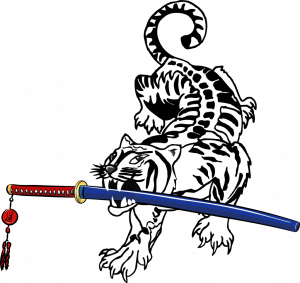“Why are you in class?”
“I don’t know.”
“Then work your butt off so when I ask if you have questions, you can answer “No.” and I will leave you alone to get the work done.”
Or “Why are you in class?”
“To learn everything I can.”
“Then work your butt off and when I check on you, I’ll provide insights into what you’re working on or additional material.”
This thought combination came up recently as I noticed too many students standing around during the “open” portion of their class. They had been given assignments (that week happened to be forms) or reviewing their previous forms and continue to develop their current form.
As I finished up with one rank group, I looked around to see what was happening. Sadly, the majority of students were standing around talking. Yes, I do believe that students have valuable insights to offer each other but there’s a difference between providing an insight and debating what they think they know.
My school tends to have many intellectual students. One is even a graduate student in Physics, so it doesn’t surprise me that some discussion occurs. The problem is when the perceived academic knowledge becomes the focus of training. These academic martial artists forget that the physical training MUST be done. Martial artists DO, they don’t chat, during training.
The most important part of class is the DOING. Since there are only a couple times per week that you get to train with your teacher, it is important that you work hard on the material that is assigned. Continued practice at home makes for greater understanding. nothing should ever be “close enough.”
I asked a group of mid-levels colored belt younglings a question during a recent class. My question was “3+2=4, right?” They all looked at my like I was crazy and responded “No, it is 5.” I followed up with another question, “But 4 is close enough, isn’t it?” I was told, “No, because the answer was wrong.” I finished with asking them about their stances. “Are they right? If not, they can’t be “close enough” either. I got several light bulbs to turn on, so I’ll see what stances improve.
You should never be training in just have some intellectual knowledge nor be close enough. Train to DO completely and correctly.
Author: Master Robert Frankovich
As you read and enjoy the posts on this site, please consider “sharing” them! The “likes” help generate additional readership but “sharing” will help even more! Thank you for your assistance!
If you have questions, please feel free to contact me!



2 thoughts to “Work Your Butt Off!”
This is very true. One thing that would help me is if there was a listing/database I could reference of ‘what makes it perfect’ or ‘what perfect should look like’. For example, when moving from sodosae to sodosae in succession, the head should stay at the same level, the finishing length of stance should be equal to kimajasae and the back lower leg should be parallel with the floor… (wow, I have learned a lot in a short amount of time – assuming all the above is correct). I believe these to be true, and while I realize I am new to the art, does it make sense to have this info available online? Perhaps it is better to learn it as I have along the way… Yet if this is true, perhaps reminders for those that are more experienced to have a review of what they may have forgotten?
Having a listing or database could be beneficial. It isn’t something that I’ve thought about and, right now, am not sure how it would be created…but then it is something I can work on. The review of information has typically come from working with the new students. Once they get some training in and have joined the full class, the class then gets to work through stuff with them (partly to be good role models) and hear most of the instructional lecturing again. BTW, this happened just last night.
Comments are closed.